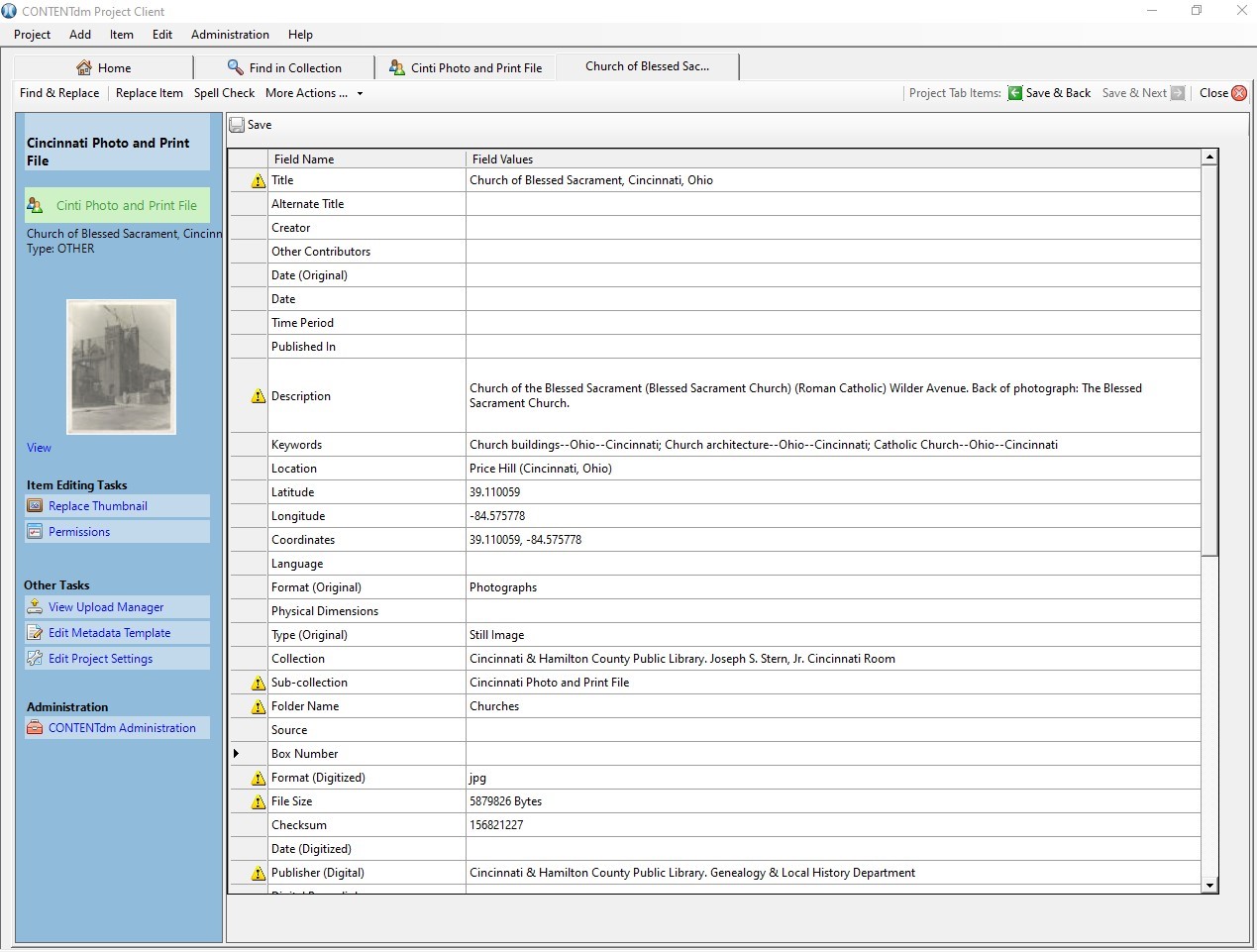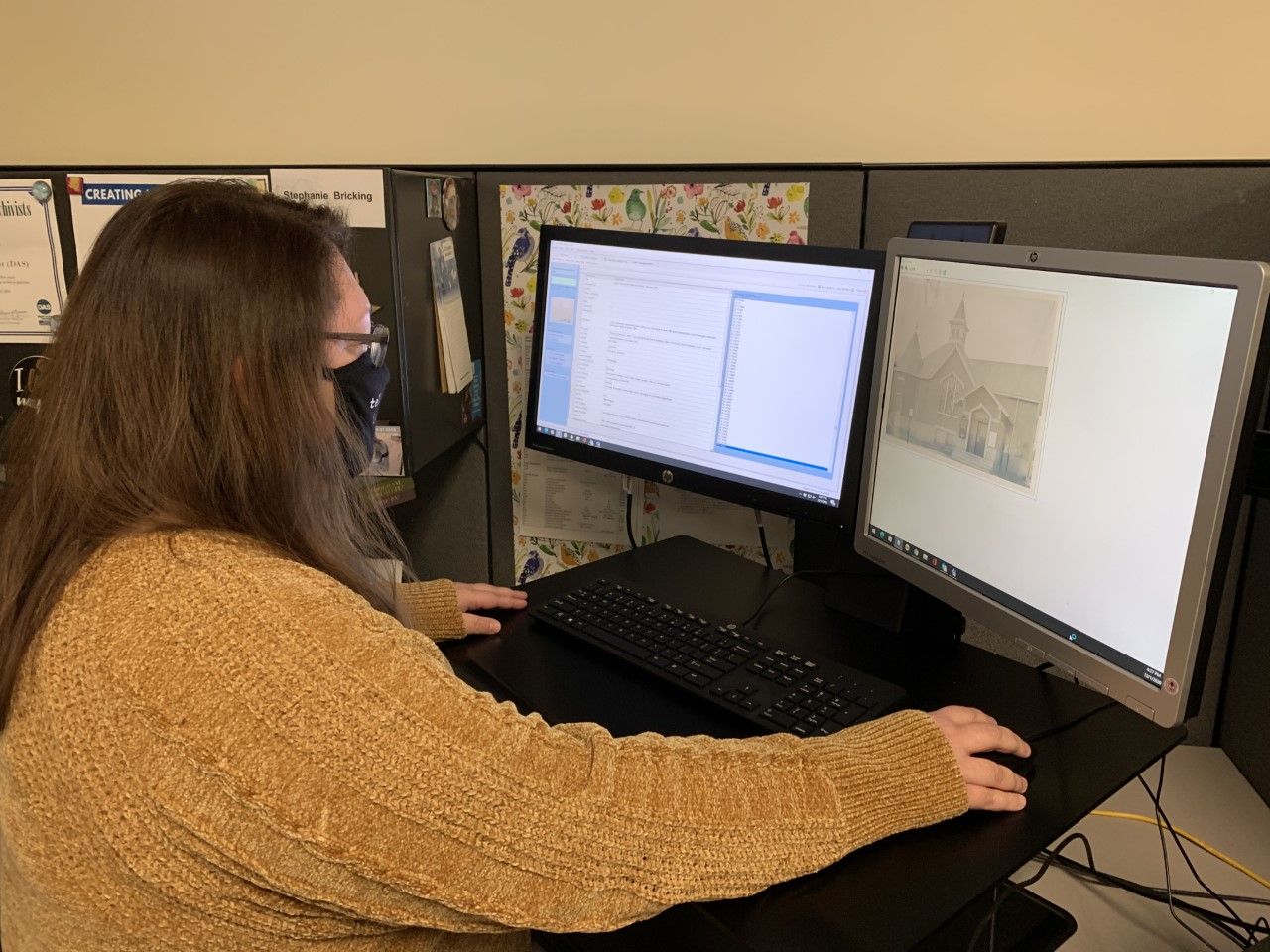 When people hear the word “library” a few things typically come to mind, namely librarians and books. But a library is run by people working in many different roles. They’re all helping community members with much more than book recommendations. Our series Spend a Day with a Library Worker, opens a new window takes you inside the lives of our library staff in different roles and follows them on a typical workday.
When people hear the word “library” a few things typically come to mind, namely librarians and books. But a library is run by people working in many different roles. They’re all helping community members with much more than book recommendations. Our series Spend a Day with a Library Worker, opens a new window takes you inside the lives of our library staff in different roles and follows them on a typical workday.
“What is a Metadata Librarian?” you might be wondering. Let’s start by defining metadata, which is data that provides information about other data. There are many all different types of metadata: descriptive, structural, administrative, reference, and statistical metadata, to name a few.
For Metadata Librarian Stephanie Bricking, who works in the Library’s Cataloging & Processing Department, much of her work centers around descriptive metadata. “Descriptive metadata is the kind of metadata that I, as well as my cataloging colleagues, create on a daily basis,” said Stephanie. “This metadata describes items, gives context for items, and helps our customers connect to our resources. Without metadata, our customers couldn’t search or browse our catalog. Our Digital Library, opens a new window would be far less robust without descriptive metadata. Metadata is pretty important.”
Stephanie currently splits her time between her office at the Library’s Distribution Center, opens a new window and her at-home office due to the pandemic. Depending on where she’s working, she focuses on different tasks.
“I work very closely with the Genealogy & Local History Department,, opens a new window” said Stephanie. “The items that they digitize typically are uploaded into our digital collections management system software called CONTENTdm, and that’s where I come in. On Tuesdays and Fridays, when I am at the Distribution Center, this is where I am mainly focusing. When I come in to work, I usually contact the team to see if there are any new stand-alone items that need metadata, or any new projects that might be coming up soon, before starting in on some of our long-term metadata projects.”
 “The two major photo collections that we have been adding items to are the Cincinnati Photo and Print File, opens a new window and the Library History collection, opens a new window,” said Stephanie. “The Digital Services Assistants, opens a new window typically enter some preliminary metadata, based on the information found on the back of the photograph or the folder the photos were located in, and then it’s my job to go in and enhance the records with more descriptive metadata. This descriptive metadata, when published online, helps customers access our rare materials without having to come to the Library.”
“The two major photo collections that we have been adding items to are the Cincinnati Photo and Print File, opens a new window and the Library History collection, opens a new window,” said Stephanie. “The Digital Services Assistants, opens a new window typically enter some preliminary metadata, based on the information found on the back of the photograph or the folder the photos were located in, and then it’s my job to go in and enhance the records with more descriptive metadata. This descriptive metadata, when published online, helps customers access our rare materials without having to come to the Library.”
Working from home looks a little different for Stephanie. "At home, I typically do other cataloging-related projects.” she said. “For example, I batch-load eResources, opens a new window (eBooks, eMusic, etc.) from several different vendors into the Library catalog. I also catalog print books (mostly fiction, easy, and science books), and the digital version of the books that we have in the Digital Library. I am currently working on a project to add thumbnail images to our digital titles so that they display on our new website.” (Note: Most records in the Digital Library are best found using its internal search, not our main catalog search.)
One of Stephanie's favorite parts of her job is working with all of the rare and one-of-a-kind items the Library owns. “I have really learned a lot about the Library system and about Cincinnati history by working with our unique items, like Art Work of Cincinnati, opens a new window , a book from 1893. I enjoy the fact that I am able to help provide access to items that customers might not have had easy access to before,” she said.
“The metadata created for the items in the Digital Library is harvested into the Digital Public Library of America, opens a new window, so our unique and rare materials are accessible to even more people through this platform. I think it’s cool that anyone could discover and connect to these materials from our library, for research, for fun, or for whatever they might need them for.”
 Stephanie’s co-workers help make her job even more rewarding. “I have been working at the Library for seven years now, but even so, I am still always learning new things,” she said. “The great thing about my colleagues in Cataloging & Processing is that they are always willing to answer a question, or if they don’t know, they go with me on the journey of figuring it out. And my colleagues in the Genealogy & Local History Department are also great to work with. Since they are the first to see an item, sometimes I ask them for more context or for help reading the handwriting on the back of a photo. And they are always willing to help. I really am surrounded by great colleagues, and I know I am very lucky to have that.”
Stephanie’s co-workers help make her job even more rewarding. “I have been working at the Library for seven years now, but even so, I am still always learning new things,” she said. “The great thing about my colleagues in Cataloging & Processing is that they are always willing to answer a question, or if they don’t know, they go with me on the journey of figuring it out. And my colleagues in the Genealogy & Local History Department are also great to work with. Since they are the first to see an item, sometimes I ask them for more context or for help reading the handwriting on the back of a photo. And they are always willing to help. I really am surrounded by great colleagues, and I know I am very lucky to have that.”
One of the most challenging things about being the Metadata Librarian can be figuring out what to do about an item when there is no information provided. One could say part of Stephanie’s job is playing detective. “Every once in a while, a photo ends up being labeled [something like] “Unknown church, Cincinnati, Ohio,” and that’s only if we can narrow it down to Cincinnati,” she said. “One of the more frustrating things about the job is not knowing. Sometimes I ask a colleague if they might recognize a place, or I check if there are any other photos in the collection that might be able to give me some hints. Or, in some cases, I might ask the collective wisdom of the Library,” she said.
“Since the pandemic, it’s been a little bit harder because I can’t just go to my colleague’s cubicle and ask them if they can look at this image on my computer screen. But thankfully, Microsoft Teams has been a great help. I also welcome any input from the community. If you recognize something that is labeled as unknown, like the people pictured in this item, opens a new window, you are more than welcome to email me, opens a new window with the info, and I am happy to update the item on the Digital Library.”
See Stephanie’s work in action by browsing our catalog and the Digital Library, opens a new window. With her helpful metadata, you’ll have a much easier time finding what you’re looking for.


Add a comment to: Spend a Day with a Library Worker: Metadata Librarian Stephanie Bricking